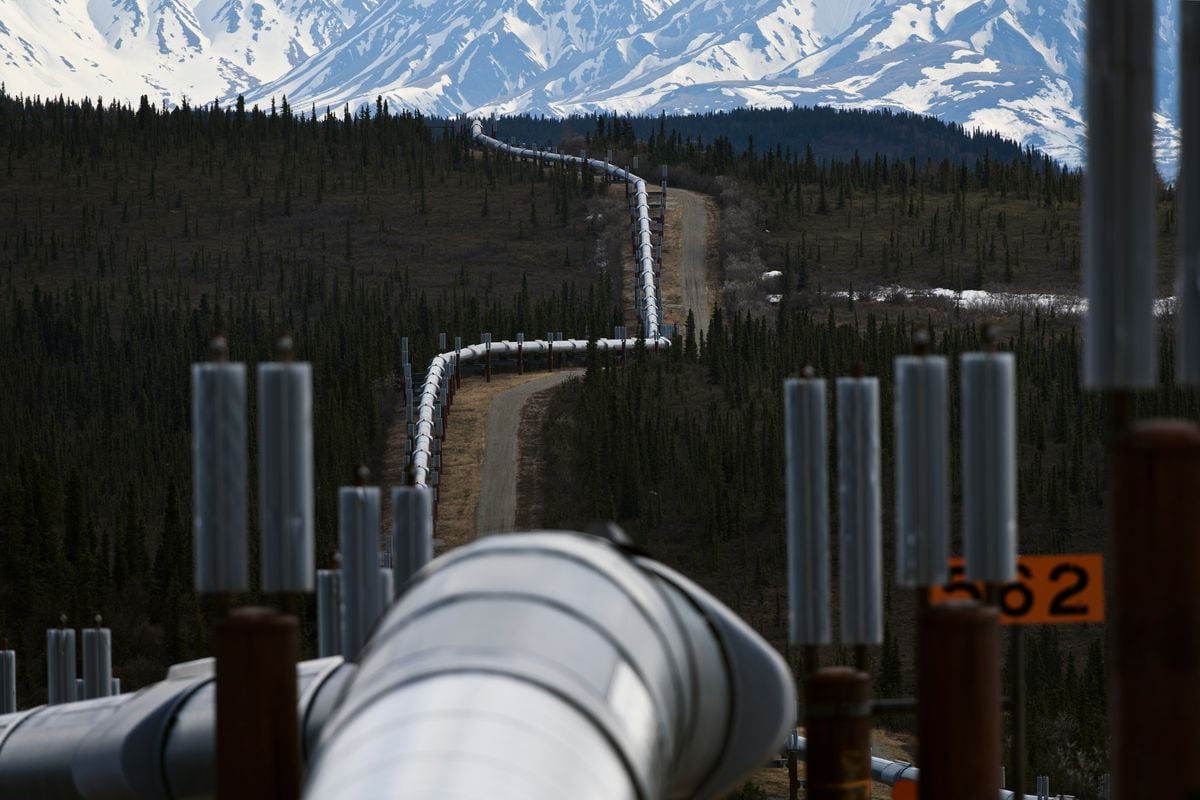
Some opponents of Ballot Measure 1 try to argue that it will reduce Permanent Fund dividends. This is patently false. PFDs are funded from Permanent Fund earnings in the stock market and other investments, not based on oil production. How much to appropriate for paying PFDs is a legislative decision; it is a political decision independent of oil revenues. Until we decide to tax ourselves, every dollar spent on dividends is one dollar less for investments in education, health care, public safety, highways and bridges. The more revenues we have from all other sources, including oil taxes, the less pressure there will be to use Permanent Fund earnings to fund essential state services.
While it is true that 25% of the state’s royalty share of produced oil is deposited to the principal of the Permanent Fund, so an increase in production could marginally increase future earnings, the likely effect is so speculative, small and far in the future that it is not a serious argument. Giving oil companies a tax break today will not necessarily increase future oil production. Under the Palin administration, oil taxes were higher than now; when the Parnell administration enacted the current tax credits, production continued to decline. There was a small uptick in 2016 and 2017, but then production returned to its downward trend. The oil companies have lots of Outside options for their surplus cash. Note that when the 40% federal tax cut for corporations went through in 2017, the argument was that it would increase investment and economic growth for all. Did that happen? No. Instead, the corporations engaged in record-breaking stock buy-backs which only served to enrich their largest stockholders.
Even if the tax break does result in the development of some new fields, it is not likely to increase the state’s royalty income. The state only earns royalties on oil under state land, including Prudhoe Bay and Kuparuk. Most of the undeveloped oil prospects are on land owned by the federal government. While the federal government shares a percentage of its royalties with the state and local governments, these revenues do not generally go into the Permanent Fund.
Nor is it likely to bring in significant new tax revenue. Production tax rates are based on the net value of the oil. There are no big, lucrative oil reserves left to develop. The small, new fields that are still out there are economically so marginal that the net value of the oil is small, so it generates little in taxes.
It takes 10 years to bring a new field into production. Using a very modest discount rate of 5% — meaning a dollar next year is worth 5% less than a dollar today, then compounded for 10 or more years — these highly uncertain future revenues are not worth very much compared to foregone revenues today.
Small investments in enhanced recovery technologies on Prudhoe and Kuparuk might extend the life of those fields and slow the inevitable decline in oil production and the correspondingly inevitable decline in royalties and production taxes, but it is questionable how much that might increase the future assets and earnings of the Permanent Fund.
As of June 30, the asset value of the fund was more than $64 billion. The fiscal year 2020 contributions to the principal are $316 million — less than one half of one percent of the total value. And the trend is down: not only is production declining in volume, prices are low.
Even with no new oil development, there is enough money to pay a generous PFD forever. The money comes from the Earnings Reserve account, which as noted above is earnings on investments. Permanent Fund managers aim for a long-term, real rate of return on investments over 5%. Using the Percent of Market Value formula, each year managers transfer 5% of the previous five-year average value of the fund to the Earnings Reserve. Even with no new deposits to the corpus of the Fund, 5% of $64 billion amounts to about $3.2 billion per year in perpetuity (in 2020 dollars). If we were to pay out half of this in PFDs, based on our current population of roughly 700,000, it would be enough to provide a PFD of more than $2,000 to every man, woman and child in Alaska forever.
Oil is a dying industry. I think our best strategy is to milk the legacy fields for every dollar we can get, then cut and run. We all knew this day was coming; now it is here. It’s time to get back to basics of self-reliance in a diversified economy and stop relying on Daddy Warbucks' trust fund.
Sharman Haley is an economist and retired professor of economics and public policy at the University of Alaska Anchorage.
"oil" - Google News
September 30, 2020 at 07:17AM
https://ift.tt/2Gn6JTq
Save the PFD: Vote yes on oil taxes - Anchorage Daily News
"oil" - Google News
https://ift.tt/2PqPpxF
Shoes Man Tutorial
Pos News Update
Meme Update
Korean Entertainment News
Japan News Update
Bagikan Berita Ini














0 Response to "Save the PFD: Vote yes on oil taxes - Anchorage Daily News"
Post a Comment